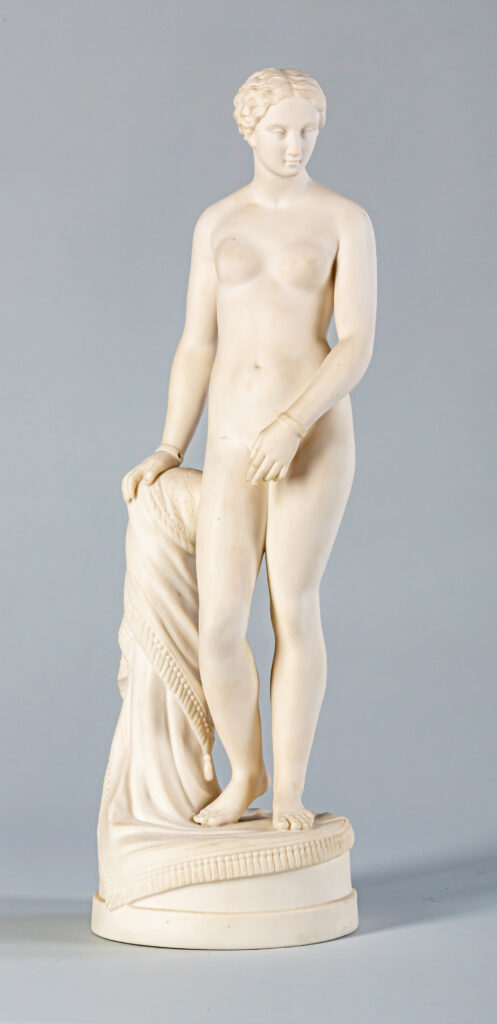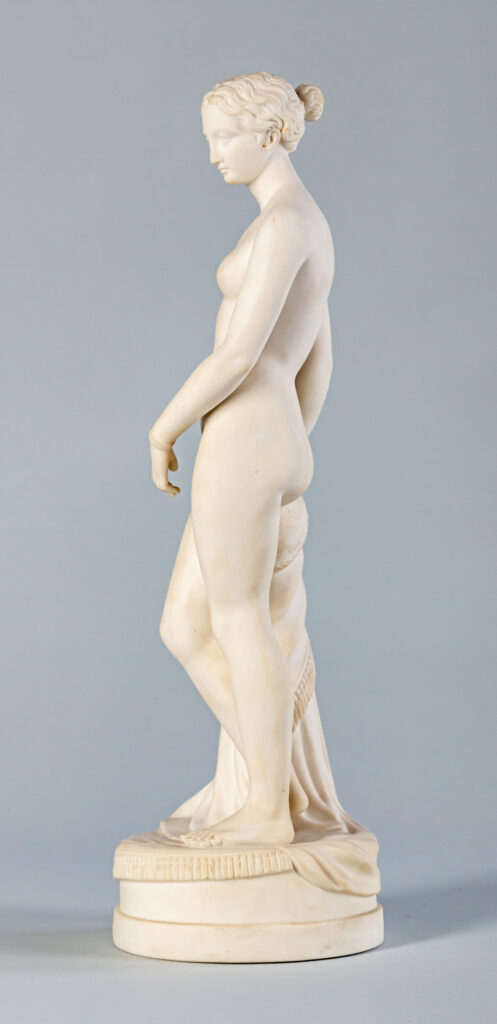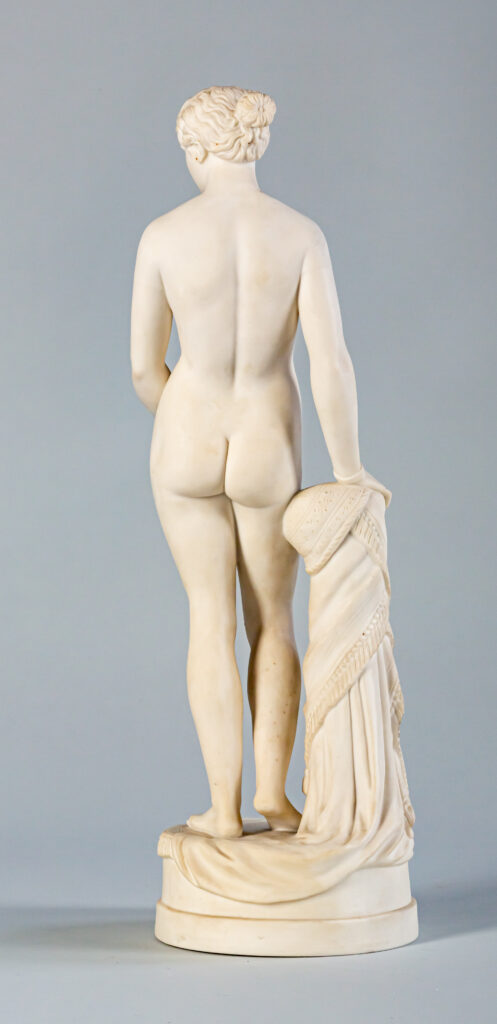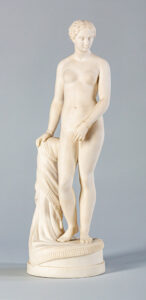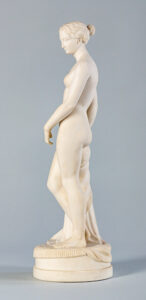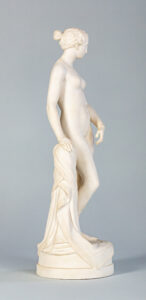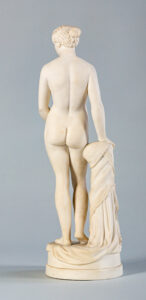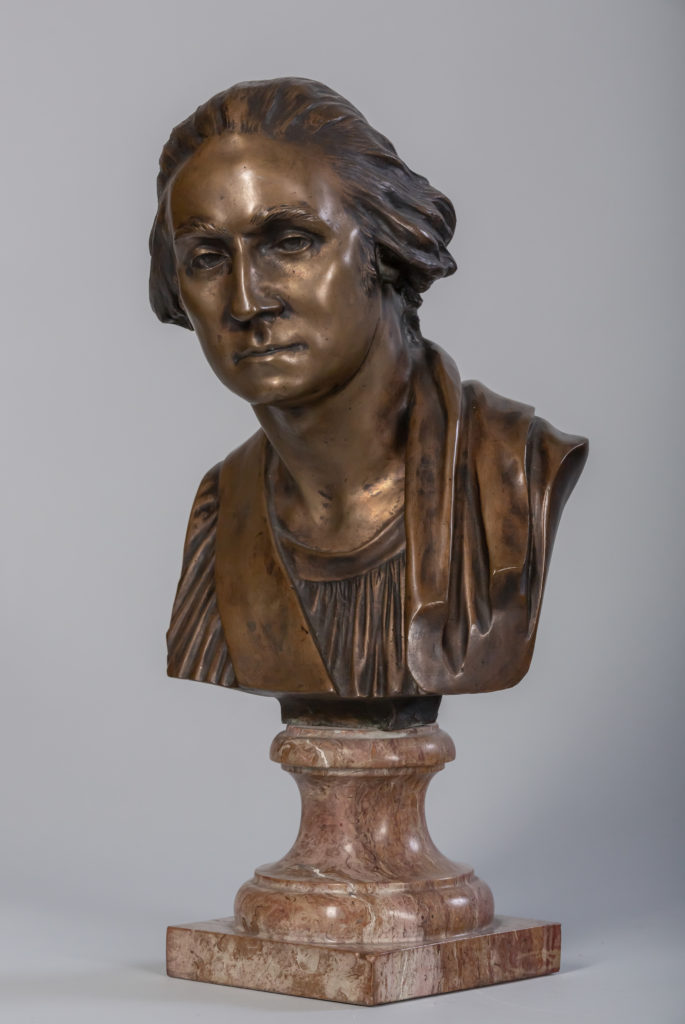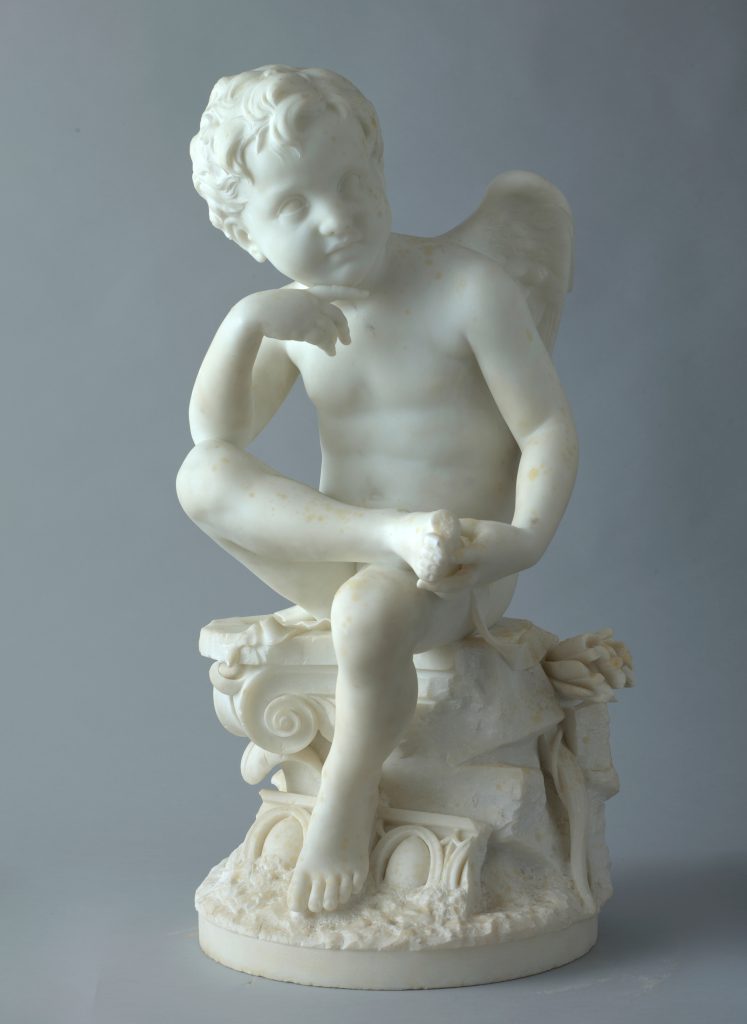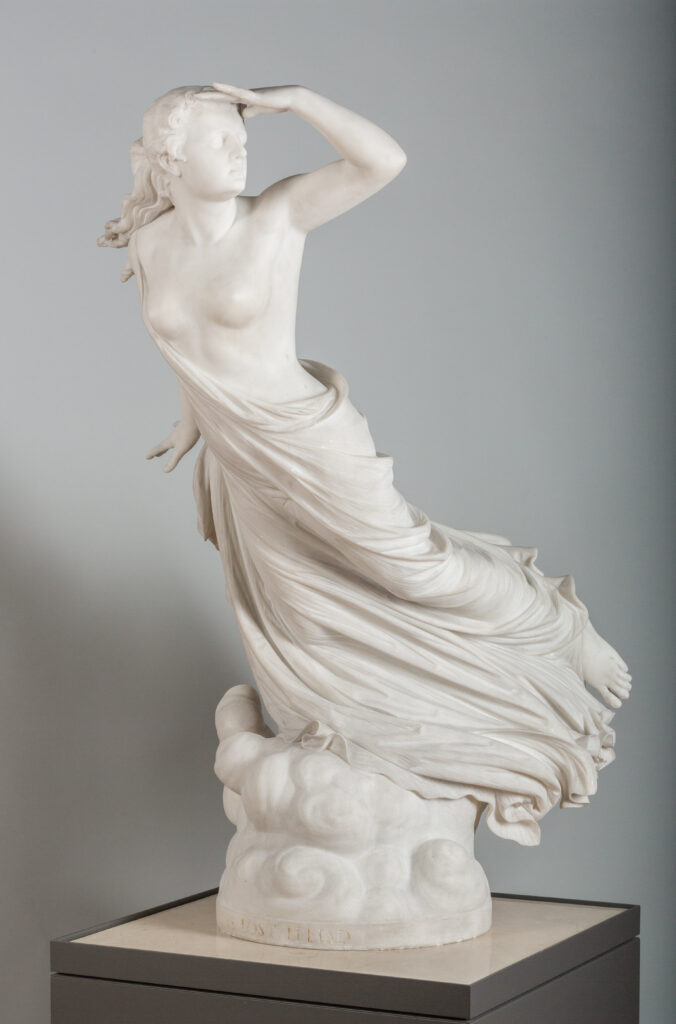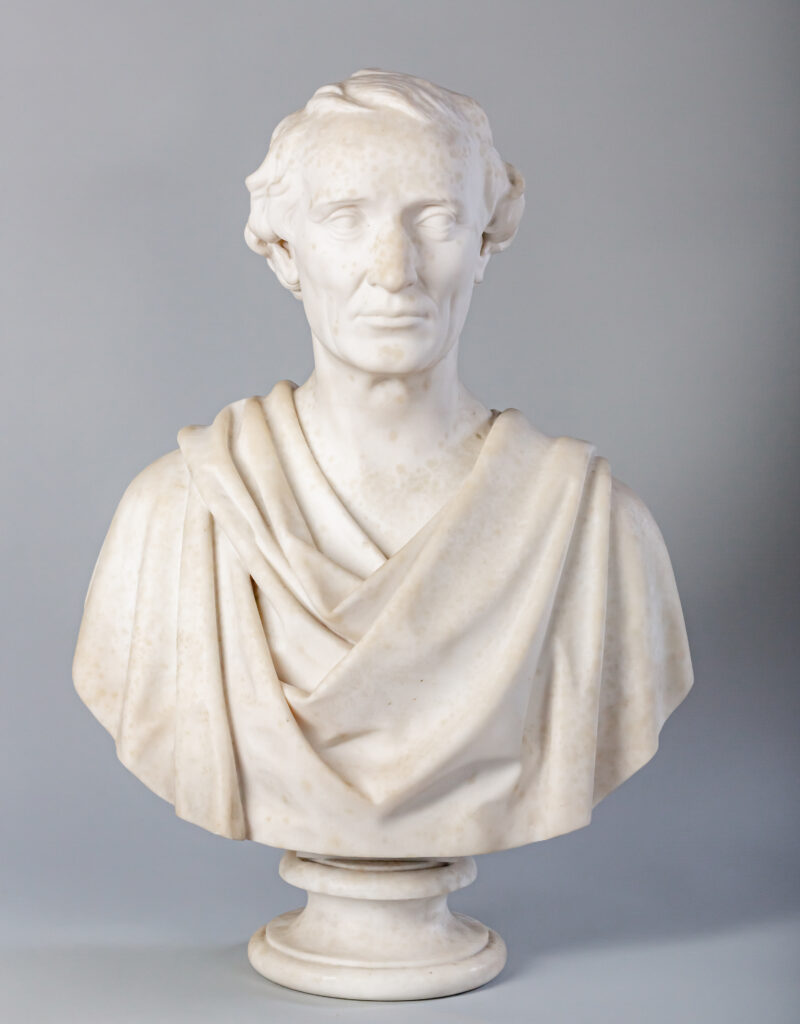The Greek Slave
Bequest of Isabel S. Forsaith
1966.23The Greek Slave is a prime example of the creative way that American artists have put the ancient past in dialogue with the present. Hiram Powers completed modeling The Greek Slave in 1843, shortly after the Greek War of Independence (1821–1832). He conceived of the figure as a Greek captive on sale at an Ottoman slave market. Sculpted in the high neoclassical style then in vogue, the statue upholds the Greeks as a moral (and aesthetic) exemplar, especially contrasted against her imagined Turkish captors. The restrained classical archetype is positioned in a pose evocative of the Venus de Medici, one of the most famous Greek Hellenistic marbles in Italy, where Powers’s studio was based. The facial features and hair are a composite of styles undoubtedly drawn from Powers’s study of Attic and Hellenistic Greek marble sculpture and plaster casts on view in Florence’s galleries.[1]
The nude figure, a sensational subject matter at the time (the Greek Slave was the first life-size nude figure to be exhibited in America), leans against a support in contrapposto. Her wrists are shackled and chained in front of her by a double chain. The statue, which looks on first glance much like high classical Greek sculpture, is brought into the present and Christianized by the presence of a cross and locket—symbols of faith and fidelity—on which the right hand rests atop the support. The pose, including the element of surprise and vulnerability captured in the nude figure and the shared gestures of modesty which seek to cover that nudity, indicate points of overlap in the narrative surrounding Power’s conceived Greek captive and the story of the Venus.
The Greek Slave most immediately referred to the Greek War of Independence from the Ottoman Empire (1821–1832). However, abolitionists found a powerful symbol for their crusade against the continued evil of slavery in America. The statue met with rapid and widespread acclaim; beginning in 1847, it was the focus of a popular touring exhibition in major US cities well into the 1850s and was installed in the US pavilion at the Crystal Palace in London in 1851. Six full-scale marble copies of the model were made as well as numerous copies at reduced scale and in bust form. So high was the demand for the sculpture that several porcelain manufacturers in England and America made copies in Parian ware like this one. These would have been popular home furnishings and were displayed by abolitionists, including Frederick Douglass, in their homes.
[1] Richard P. Wunder, “Hiram Power: Vermon Sculptor, 1805-1873 (Vol. I),” in The American Arts Series (Cranbury, NJ: Associated University Presses, 1991), 209.
